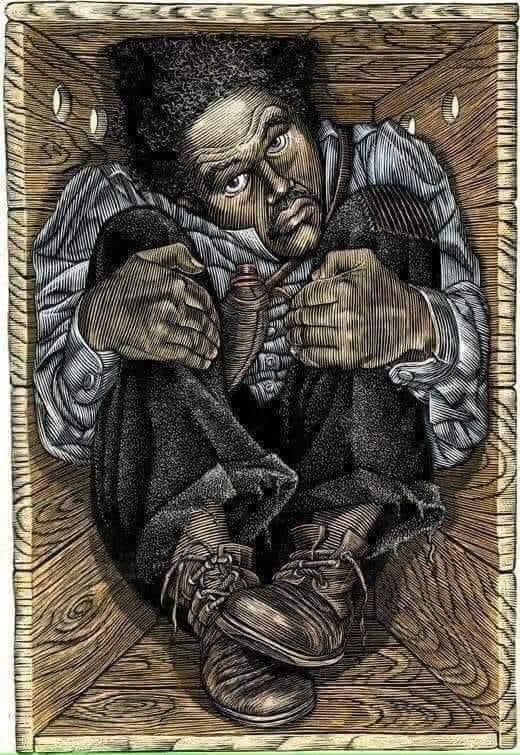In a daring and creative escape, Henry “Box” Brown, a slave from Richmond, Virginia, mailed himself to freedom in Philadelphia in 1849.
Brown’s remarkable story has inspired generations and serves as a powerful reminder of the brutal reality of slavery and the extraordinary measures people took to escape it.
Born in 1815 or 1816 at the Hermitage plantation in Louisa County, Virginia, Brown spent his early years with his parents and siblings, all of whom were enslaved by John Barret, a former mayor of Richmond.
After Barret’s death, Brown was separated from his family and sent to work in a tobacco factory in Richmond, where he later married Nancy, an enslaved woman, and had three children.
When Nancy and their children were sold to a plantation in North Carolina in 1848, Brown was devastated.
He resolved to escape and conceived a plan to mail himself to freedom in the North.
With the help of James Caesar Anthony Smith, a free Black man, and Samuel Alexander Smith, a white shoemaker, Brown had himself sealed in a wooden box and shipped as “dry goods” from Richmond to Philadelphia.
The 350-mile journey took 27 hours, during which Brown was turned upside down and roughly handled.
He later wrote, “I was resolved to conquer or die.” Finally, on March 24, 1849, the box arrived in Philadelphia, and Brown emerged, alive and free.
Brown’s escape made him an instant celebrity in the abolitionist movement.
He appeared before the New England Anti-Slavery Convention in Boston, where he was renamed Henry “Box” Brown.
He published a narrative of his escape, which was written by Charles Stearns, and toured New England and England giving antislavery lectures.
In England, Brown exhibited a moving panorama called “Henry Box Brown’s Mirror of Slavery” and developed the character of the African Prince.
He also began performing as a mesmerist and a magician, entertaining audiences with his hypnotic abilities.
Henry “Box” Brown’s remarkable story has inspired works by several contemporary artists.
He has been featured in a short film, at least two plays, an opera, and an exhibit at a wax museum.
His legacy serves as a powerful reminder of the brutal reality of slavery and the extraordinary measures people took to escape it.
Brown’s famous passage to freedom was not a thing apart from the rest of his life, and he displayed the attributes that enabled him to succeed as a fugitive time and again during his long career as a performer.
He died on June 15, 1897, in Toronto, Canada, where he is buried in Necropolis Cemetery.
In conclusion, Henry “Box” Brown’s story is a testament to the human spirit’s capacity for resilience, creativity, and determination.
His legacy continues to inspire and educate people about the horrors of slavery and the power of the human spirit to overcome even the most daunting challenges.



